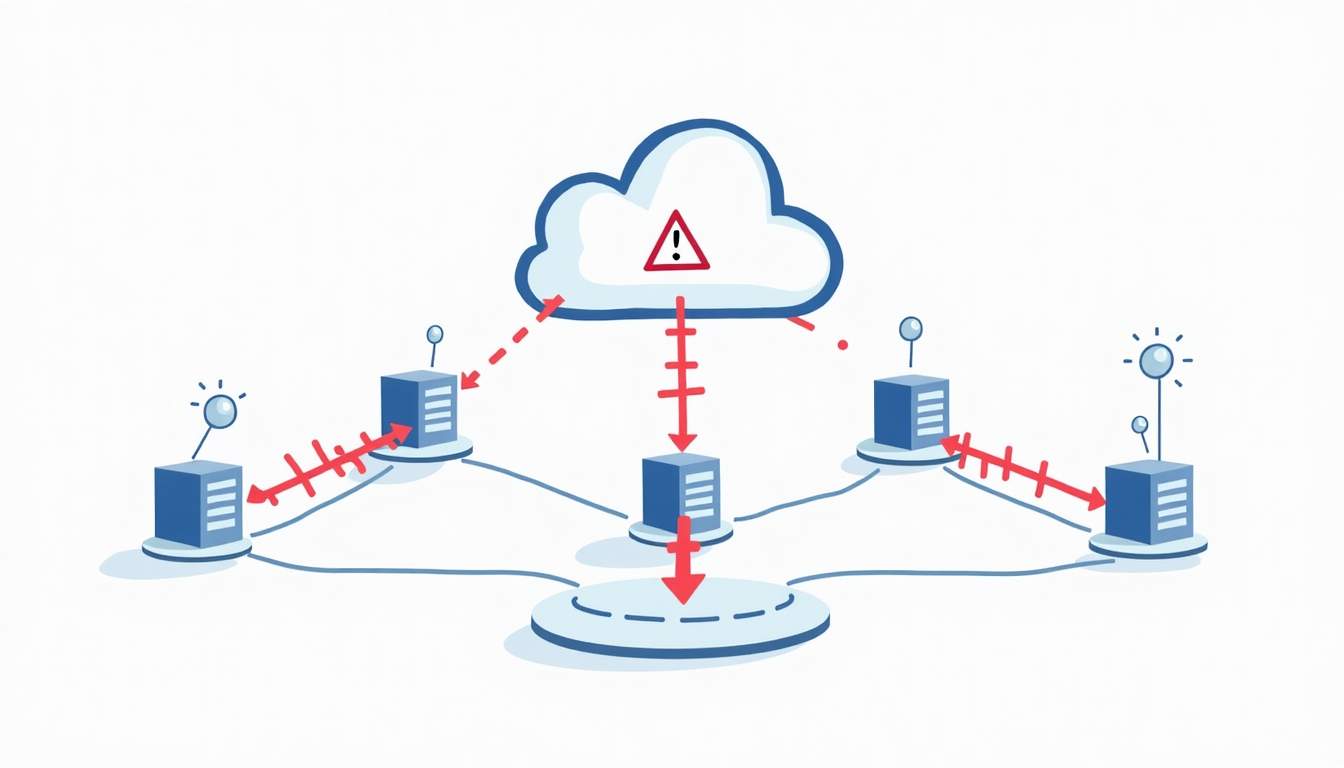Understanding RPC Load Balancing in Web3
As the world of decentralized applications (dApps) continues to evolve, the need for efficient and reliable communication between clients and blockchain networks becomes paramount. Remote Procedure Call (RPC) load balancing is a critical component in ensuring that these interactions are seamless, scalable, and resilient. This article delves into the intricacies of RPC load balancing in the context of Web3, exploring its importance, methodologies, and best practices.
What is RPC Load Balancing?
RPC load balancing refers to the distribution of client requests across multiple servers or nodes to optimize resource use, maximize throughput, minimize response time, and avoid overload on any single resource. In the context of Web3, where decentralized networks operate, RPC load balancing plays a vital role in enhancing the performance and reliability of blockchain interactions.

The primary goal of RPC load balancing is to ensure that requests from dApps are efficiently routed to the appropriate nodes in a blockchain network. This is crucial because a single node may become a bottleneck if it receives too many requests, leading to increased latency and potential downtime.
Importance of RPC Load Balancing in Web3
In the decentralized ecosystem of Web3, where applications rely heavily on blockchain networks, RPC load balancing serves several essential functions:
- Scalability: As the number of users and transactions increases, load balancing allows the system to scale efficiently by distributing requests across multiple nodes.
- Reliability: By routing requests to healthy nodes, load balancing enhances the reliability of the application, ensuring that users experience minimal disruptions.
- Performance Optimization: Load balancing can significantly reduce response times by directing requests to the least busy nodes, improving the overall user experience.
- Fault Tolerance: In the event of a node failure, load balancers can redirect traffic to operational nodes, maintaining service continuity.
How RPC Load Balancing Works
RPC load balancing can be implemented using various strategies and methodologies. Understanding these approaches is crucial for developers and system architects in the Web3 space. Here are some common techniques:

1. Round Robin Load Balancing
Round Robin is one of the simplest load balancing algorithms. It distributes incoming requests sequentially across a list of available nodes. Each node receives a request in turn, ensuring an even distribution of load. This method is effective for scenarios where all nodes have similar capabilities and performance characteristics.
2. Least Connections Load Balancing
The Least Connections method directs traffic to the node with the fewest active connections. This approach is particularly useful when nodes have varying capacities or when some nodes are more powerful than others. By prioritizing nodes with fewer connections, this method helps to optimize resource utilization and improve response times.
3. IP Hash Load Balancing
IP Hashing involves using the client's IP address to determine which node will handle the request. This method can be beneficial for maintaining session persistence, ensuring that a user’s requests are consistently routed to the same node. This is particularly important for applications that require stateful interactions.
4. Health Checks and Failover Mechanisms
Effective RPC load balancing also incorporates health checks to monitor the status of nodes. Load balancers can periodically ping nodes to determine their availability and performance. If a node fails to respond or exhibits degraded performance, the load balancer can automatically reroute traffic to healthy nodes, ensuring uninterrupted service.
Implementing RPC Load Balancing in Web3
Implementing RPC load balancing in a Web3 environment requires careful planning and execution. Here are key steps to consider:
1. Choose the Right Load Balancer
There are various load balancing solutions available, ranging from hardware appliances to software-based solutions. When selecting a load balancer, consider factors such as:
- Scalability: Can it handle increasing loads as your application grows?
- Flexibility: Does it support multiple load balancing algorithms?
- Integration: How well does it integrate with your existing infrastructure?
2. Configure Load Balancing Algorithms
Once a load balancer is selected, configure the appropriate load balancing algorithms based on your application's needs. Consider the traffic patterns and the capabilities of your nodes to determine the most effective strategy.
3. Monitor and Optimize
Continuous monitoring is essential for maintaining optimal performance. Use monitoring tools to track metrics such as response times, error rates, and node health. Analyze this data to identify trends and make informed decisions about scaling and optimizing your infrastructure.
Challenges in RPC Load Balancing
While RPC load balancing offers numerous benefits, it also presents certain challenges that developers must navigate:

1. Complexity of Decentralized Networks
In a decentralized environment, the dynamic nature of nodes can complicate load balancing efforts. Nodes may join or leave the network at any time, requiring the load balancer to adapt quickly to these changes.
2. Latency Issues
Network latency can impact the effectiveness of load balancing. If nodes are geographically distributed, the time it takes for requests to travel across the network can introduce delays. Implementing edge computing solutions can help mitigate these issues by processing requests closer to the user.
3. Security Concerns
RPC endpoints can be vulnerable to various security threats, including DDoS attacks and unauthorized access. Implementing security measures, such as rate limiting and authentication, is crucial to protect the integrity of the load balancing system.
Best Practices for RPC Load Balancing in Web3
To maximize the effectiveness of RPC load balancing in Web3, consider the following best practices:
- Regularly Update and Patch: Keep your load balancing software up to date to protect against vulnerabilities and improve performance.
- Implement Caching: Use caching strategies to reduce the load on nodes and improve response times for frequently accessed data.
- Test Load Balancing Strategies: Regularly test different load balancing algorithms and configurations to identify the most effective setup for your specific use case.
- Document Your Architecture: Maintain clear documentation of your load balancing architecture and configurations to facilitate troubleshooting and future enhancements.
Conclusion
RPC load balancing is a fundamental aspect of building efficient and reliable Web3 applications. By understanding the various load balancing techniques, implementing best practices, and addressing potential challenges, developers can create robust systems that enhance user experience and ensure seamless interactions with blockchain networks. As the Web3 ecosystem continues to grow, mastering RPC load balancing will be essential for developers looking to build scalable and resilient decentralized applications.
Ready to elevate your dApp development and streamline your Web3 infrastructure? Look no further than Uniblock. With our advanced orchestration platform, you can effortlessly connect to blockchain data through a single API endpoint, ensuring maximum uptime, minimal latency, and cost-effective scaling. Join the ranks of over 2,000 developers across 100+ chains who trust Uniblock to power their projects and free them from the complexities of decentralized infrastructure management. Start building with Uniblock today and experience the ease of Web3 development done right.
.svg)






